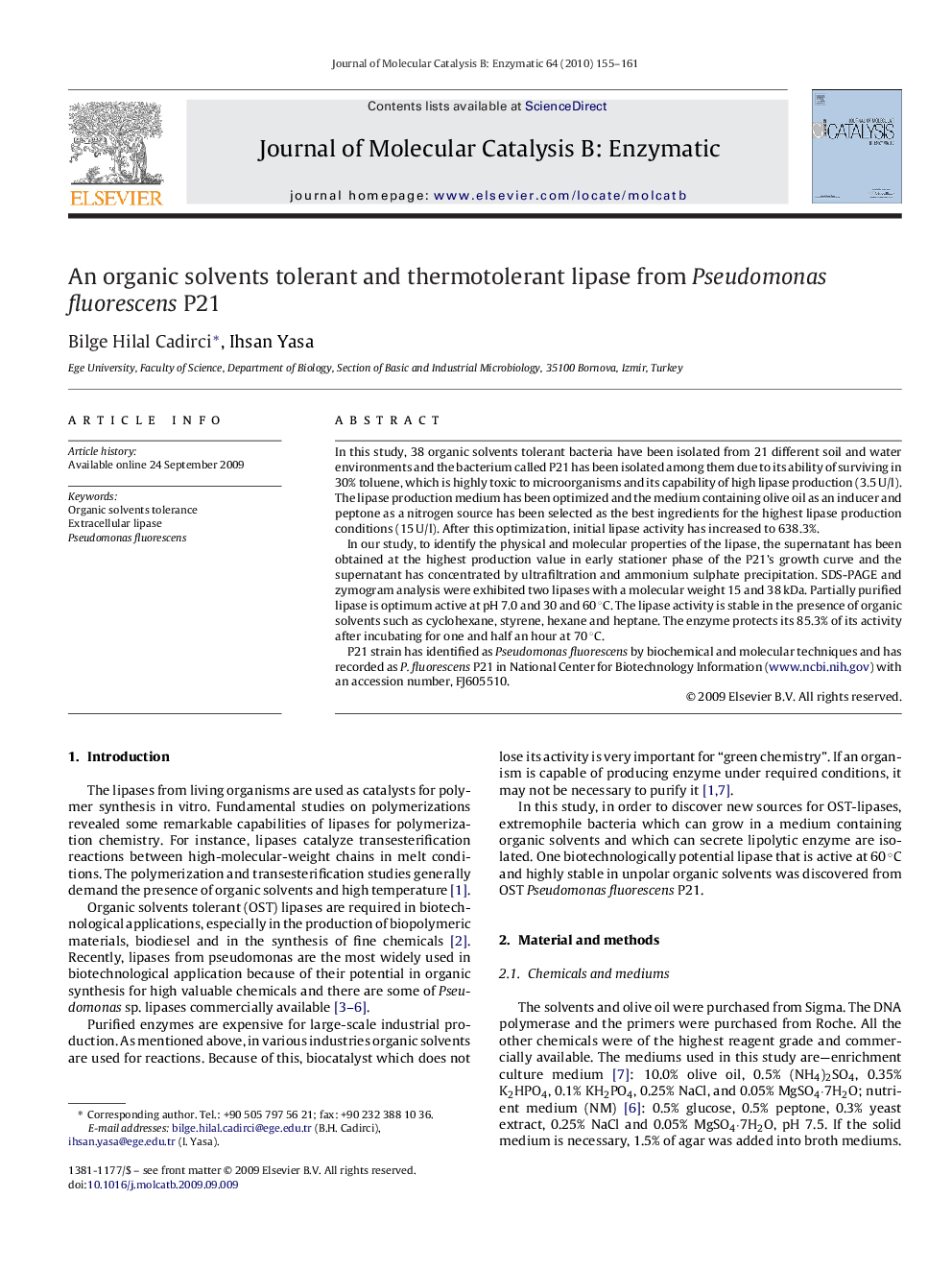| کد مقاله | کد نشریه | سال انتشار | مقاله انگلیسی | نسخه تمام متن |
|---|---|---|---|---|
| 70479 | 48832 | 2010 | 7 صفحه PDF | دانلود رایگان |

In this study, 38 organic solvents tolerant bacteria have been isolated from 21 different soil and water environments and the bacterium called P21 has been isolated among them due to its ability of surviving in 30% toluene, which is highly toxic to microorganisms and its capability of high lipase production (3.5 U/l). The lipase production medium has been optimized and the medium containing olive oil as an inducer and peptone as a nitrogen source has been selected as the best ingredients for the highest lipase production conditions (15 U/l). After this optimization, initial lipase activity has increased to 638.3%.In our study, to identify the physical and molecular properties of the lipase, the supernatant has been obtained at the highest production value in early stationer phase of the P21's growth curve and the supernatant has concentrated by ultrafiltration and ammonium sulphate precipitation. SDS-PAGE and zymogram analysis were exhibited two lipases with a molecular weight 15 and 38 kDa. Partially purified lipase is optimum active at pH 7.0 and 30 and 60 °C. The lipase activity is stable in the presence of organic solvents such as cyclohexane, styrene, hexane and heptane. The enzyme protects its 85.3% of its activity after incubating for one and half an hour at 70 °C.P21 strain has identified as Pseudomonas fluorescens by biochemical and molecular techniques and has recorded as P. fluorescens P21 in National Center for Biotechnology Information (www.ncbi.nih.gov) with an accession number, FJ605510.
Journal: Journal of Molecular Catalysis B: Enzymatic - Volume 64, Issues 3–4, July 2010, Pages 155–161